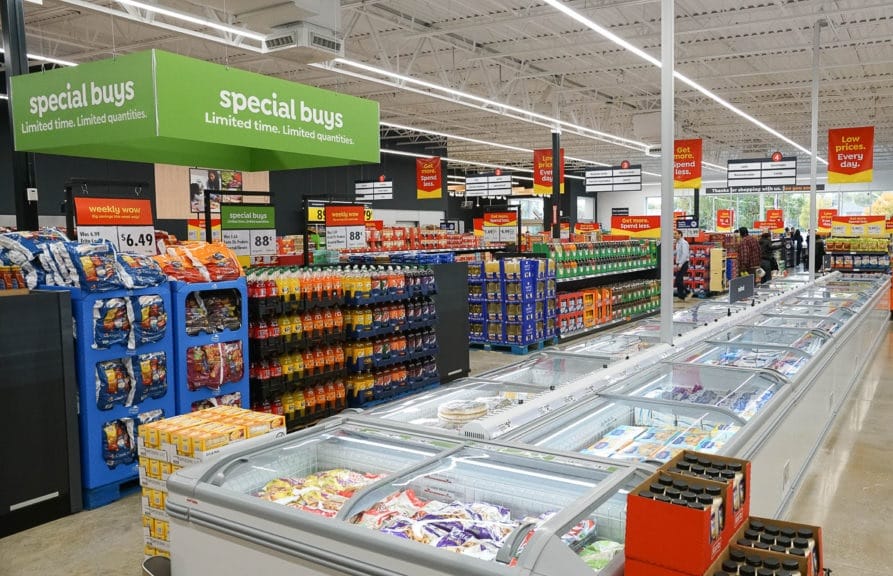
Before the Covid pandemic, the average grocery store was filled with bins of bargains, displays full of deals and endcaps packed with items from the weekly circular. Today? Not quite so much. That’s making for cleaner, less cluttered stores – but it’s also highlighting how those once eye-catching displays just aren’t as eye-catching as they used to be.
The market research firm Circana has taken a look at “2023 Grocery Display Trends,” and found that “in-store displays have not rebounded from the pandemic.” During Covid, “many displays were lost as retailers worked to clear space for a safe shopping environment.” But they’ve been slow to return to pre-Covid levels – and at this rate, they may not.
Circana counted an average of 80.3 weekly displays per store last year, down from 82.9 the year before and way down from 90.5 in 2018 – meaning stores have lost an average of ten display placements since before the pandemic.
Shoppers may consider this a good thing. After all, there are now ten fewer chances that you’ll find yourself navigating around some obnoxious display blocking the entrance to an aisle, or weaving your way through cardboard bins stacked up in the entryway.
Of course, whether or not you find them annoying, stores looking to maximize their space and maximize your spending would gladly bring back all of the pre-Covid displays – if they worked. But there’s reason to believe they’re just not working anymore.
“Displays are becoming less productive, as consumer spending response to promotions is tepid,” Circana found. “With grocery inflation up approximately 30% from 2019, promos aren’t providing the incentive consumers expect.” So more shoppers are simply ignoring them.
Whether or not they’re highlighted in in-store displays, Circana found that grocery promotions as a whole are bouncing back. The frequency of promotions is the highest it’s been since before the pandemic, at 94% of 2019 levels. The depth of promotions – defined as the percent of price reduction – is also now at 94% of 2019 levels.
But a discount of, say, 30% off 2019 prices isn’t the same as 30% off today’s higher prices. “Consumers remember their reference price for many items, and promos most likely don’t get them back to 2019 base prices,” Circana noted. So they’re wary about whether in-store displays offer very good deals at all. In addition, “many shoppers cannot afford the multi-purchase requirements of many promos.” And when price is a priority, many shoppers are switching to discount stores, since “traditional grocery retail promos can’t compete.”
So the in-store display system as we know it may be broken. How to fix it, then, so both shoppers and stores benefit?
Since “traditional promos aren’t delivering,” Circana suggests that “retailers and manufacturers should expand the role of displays to include inspiration, convenience, and value beyond saving the shopper money.”
So displays might be more eye-catching if, instead of featuring whatever random items happen to be in the weekly circular, they feature a collection of related items you can use to make a meal, or the most popular grab-and-go items to make quick shopping trips easier, or impulse items you might not know you wanted but now you just have to have them – even if they’re not on sale.
Stores could also make better use of their promotional space by not displaying items that shoppers can get a lot cheaper at discount stores or online retailers. Instead, they could feature their own store-brand products to highlight the value they provide.
If retailers follow this advice, then, don’t expect your stores to become completely free from in-store displays. “As temporary price reductions produce diminished returns, displays remain an effective instrument for highlighting value-focused and underutilized products to cash-strapped customers,” Circana concluded.
So the biggest takeaway for shoppers may be, don’t assume anymore that products featured on endcaps or in cardboard bins are necessarily on sale. Fewer displays might make for less-cluttered stores – but more displays may not help you save money the way they used to.
Image source: Save A Lot










